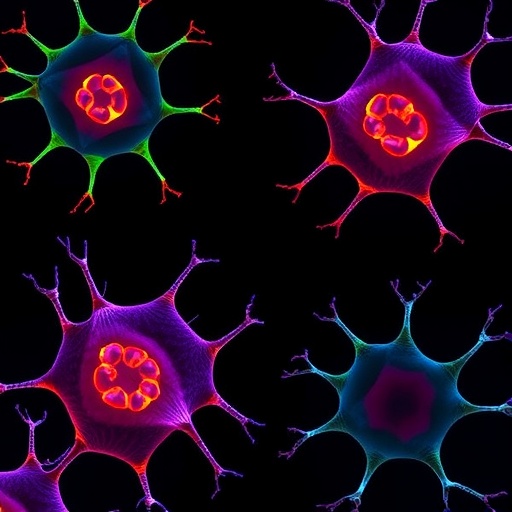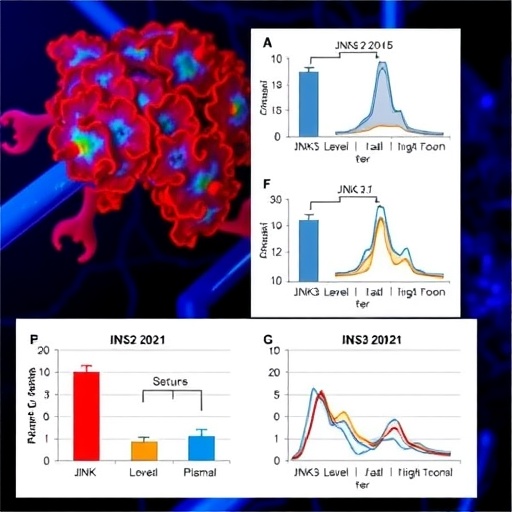In a groundbreaking advance within the field of regenerative medicine, researchers have unveiled a novel approach to enhance dental and bone tissue engineering by leveraging the unique properties of dental pulp stem cells (DPSCs) cultured on specially designed polymer nanofibers. The study, recently published in BioMedical Engineering OnLine, explores the odontogenic and osteogenic potential of dental pulp stem cells when grown on polycaprolactone (PCL) nanofibrous scaffolds coated with Biodentine, a bioactive dental material known for its mineralization capabilities. This innovation offers a promising pathway toward improving tissue regeneration therapies by optimizing scaffold design and surface chemistry.
The fabrication of the scaffolds employed electrospinning, a sophisticated technique that generates highly porous and interconnected nanofibers resembling native tissue architecture. Following fabrication, a post-processing step introduced Biodentine coatings at two concentrations (0.01% and 0.05%) to the scaffold surfaces. This dual-concentration approach allowed researchers to discern the effects of varying mineral content on scaffold morphology, cytocompatibility, and odontogenic/osteogenic differentiation outcomes. Surface analysis using scanning electron microscopy (SEM) revealed distinct differences in topography contingent upon the Biodentine concentration.
.adsslot_CNUvsSeubg{width:728px !important;height:90px !important;}
@media(max-width:1199px){ .adsslot_CNUvsSeubg{width:468px !important;height:60px !important;}
}
@media(max-width:767px){ .adsslot_CNUvsSeubg{width:320px !important;height:50px !important;}
}
ADVERTISEMENT
SEM images illustrated that PCL scaffolds without Biodentine presented a smooth, orderly fibrous matrix conducive to cell growth. When coated with 0.01% Biodentine, the scaffold surface exhibited a moderate increase in roughness, characterized by evenly distributed mineralized deposits that likely serve as nucleation sites for biomineralization. Conversely, the higher 0.05% Biodentine concentration induced excessive particle aggregation, leading to heterogeneous surface texture and potentially impaired cell-scaffold interactions. These morphological distinctions underscore the critical balance between bioactive coating density and scaffold usability.
To evaluate the functional differentiation of the dental pulp stem cells toward odontogenic and osteogenic lineages, the study assessed alkaline phosphatase (ALP) activity and calcium deposition—both established markers of mineralizing cell behavior. ALP activity peaked markedly on day 14 in the 0.01% Biodentine-coated scaffolds, signaling early differentiation processes and matrix maturation. This enzymatic upregulation is critical for subsequent mineral deposition and tissue remodeling, indicating an accelerated regenerative progression facilitated by the scaffold design.
Calcium deposition, measured on days 7, 14, and 21, reached its maximum within the 0.01% dosing group by day 21, a clear indicator of enhanced biomineralization and matrix formation crucial for hard tissue regeneration. These findings affirm that subtle surface modifications with bioactive agents such as Biodentine can significantly modulate stem cell function, effectively directing differentiation pathways and extracellular matrix mineralization to meet tissue engineering goals.
The relevance of these findings extends beyond dental applications, offering substantial implications for bone repair and regeneration. The integration of biodegradable polymer nanofibers with bioactive coatings provides a versatile platform that can be tailored for multiple tissue types by adjusting material composition and surface chemistry. This cross-disciplinary potential bolsters the scaffold’s appeal as a modular tool for regenerative therapies where controlled stem cell differentiation is paramount.
Functionally, the Biodentine/PCL scaffolds harness both mechanical and chemical stimuli to synergistically promote cell behavior conducive to tissue formation. The mechanical stability from PCL ensures structural integrity during tissue growth, while Biodentine contributes ionic species such as calcium and silicate, which are biologically active in promoting mineralization. This dual mechanism represents a sophisticated strategy to recreate the native microenvironment necessary for effective tissue regeneration.
In terms of clinical translation, the proposed scaffold system could significantly impact therapies addressing dental pulp injuries, root canal treatments, and alveolar bone defects. By fostering reliable stem cell differentiation and mineralization, these scaffolds may reduce the need for invasive procedures and improve patient outcomes through endogenous tissue regeneration. Future investigations will likely focus on in vivo assessments, long-term degradation profiles, and integration with growth factors to further enhance therapeutic efficacy.
Overall, this innovative research exemplifies the transformative potential of combining polymer nanotechnology with bioactive materials in tissue engineering. It opens new avenues to manipulate stem cell fate by engineering scaffold microenvironments at the nanoscale, setting the stage for next-generation biomaterials that could revolutionize regenerative medicine landscapes.
Subject of Research: Odontogenic and osteogenic differentiation of dental pulp stem cells using bioactive polymer nanofiber scaffolds.
Article Title: Odontogenic/osteogenic differentiation of dental pulp stem cells on a Biodentine-coated polymer nanofibers.
Article References:
Sarvarian, Z., Sanaei-rad, P., Moradikhah, F. et al. Odontogenic/osteogenic differentiation of dental pulp stem cells on a Biodentine-coated polymer nanofibers. BioMed Eng OnLine 24, 91 (2025). https://doi.org/10.1186/s12938-025-01421-5
Image Credits: AI Generated
DOI: https://doi.org/10.1186/s12938-025-01421-5
Tags: advancements in dental tissue engineeringbioactive dental materials for regenerationbiodegradable nanofibers for tissue repairBiodentine nanofibers for tissue engineeringdental pulp stem cells researchdental stem cells differentiationelectrospinning in scaffold fabricationenhancing tissue regeneration therapiesextracellular matrix mimicry in scaffoldsosteogenic potential of DPSCspolycaprolactone scaffolds in regenerative medicinescaffold design in regenerative dentistry





